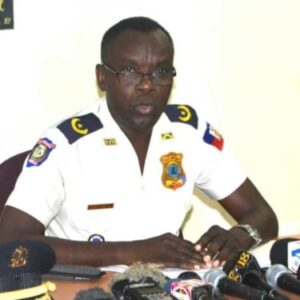First, Haiti-METEO would like to point out that, according to the hypothesis of the late Ronald Semelfort, a system coming from the north or east should not cause serious damage in certain areas of Haiti. Indeed, the intensity of this system should decrease due to the mountain ranges and reliefs. This was the case with Beryl, which weakened and moved away from Haitian territory during its passage on the night of Tuesday, July 2, 2024. The Haitian population can remain calm, because new calamities should not complicate a situation already considered alarming.
Hurricane Beryl Review
Hurricane Beryl, which made particularly early landfall, headed toward Jamaica and then the Cayman Islands after killing at least seven people and causing significant destruction in the southeastern Caribbean, the U.S. National Hurricane Center (NHC) said. The hurricane was downgraded to Category 4 on Tuesday afternoon, but was upgraded to Category 5, the highest, on Monday night and Tuesday morning. At that time, winds exceeded 158 mph (252 km/h), with “potentially catastrophic” consequences.
Beryl became the earliest Category 5 hurricane on record in July by the U.S. weather service. Among the casualties, two more deaths were reported in Venezuela, bringing the death toll there to three. Three more people were killed in Grenada, which Beryl hit on Monday, and one person died in St. Vincent and the Grenadines.
Beryl was packing winds of 146 mph (235 km/h) and was headed toward Jamaica and the Cayman Islands, according to the NHC. “The good news is that Beryl has started to weaken a little bit,” NHC Director Michael Brennan said, calling the hurricane “extremely dangerous.”
Grenada Prime Minister Dickon Mitchell said the island of Carriacou, with its 9,000 inhabitants, was cut off from the world, with its infrastructure and homes destroyed. “We have had almost no communication with Carriacou for the last 12 hours, except briefly this morning by satellite phone,” he told reporters. In Barbados, homes and businesses were flooded, and fishing boats were damaged in Bridgetown. In Martinique, streets were flooded and about 10,000 customers were without power, according to EDF.
In the Dominican Republic, massive waves crashed onto the shore of the capital, Santo Domingo, AFP photographers reported. Authorities warned of the risk of flooding and flash floods, while residents in coastal areas were urged to evacuate to safer areas.
Hurricane Beryl, with its destructive trajectory, highlights the challenges posed by these extreme weather events, especially early in the hurricane season.
Analysis of the climate crisis
“The climate crisis is pushing disasters to record levels of destruction,” said UN Climate Change chief Simon Stiell, referring to the situation in Carriacou, an island in Grenada that was devastated by the eye of the hurricane on Monday, where one of the victims was a family member.
According to Stiell, the climate crisis is worsening faster than expected, requiring much more ambitious climate action from governments and businesses. Beryl, the first hurricane of the season in the Atlantic, is an exceptionally rare weather event for this time of year, with hurricane season running from early June to late November in the United States.
In May, the National Weather Service (NOAA) predicted an unusual season with the possibility of four to seven Category 3 or higher hurricanes. This forecast is largely due to the anticipated development of the La Niña phenomenon and the exceptionally high temperatures of the Atlantic Ocean. For more than a year, temperatures in the North Atlantic have been reaching record levels, well above historical norms.
Following the passage of Hurricane Beryl and taking into account the climate crisis, Haiti-METEO, which is an organ of PROMODEV, makes the following recommendations:
· Strengthening resilient infrastructure : Invest in robust infrastructure that can withstand hurricanes and other natural disasters. This includes building buildings that can withstand high winds, improving roads and bridges, and strengthening water and sanitation systems.
· Improving emergency management : Establish effective early warning systems and train local authorities and communities in emergency management. This includes creating evacuation plans, organising regular simulation exercises and establishing well-equipped emergency shelters.
· Promoting sustainable agriculture : Encourage climate-resilient agricultural practices to protect farmers’ livelihoods. This includes adopting crops that are resistant to extreme weather conditions, diversifying crops, and using soil and water conservation techniques.
· Strengthening local capacities : Invest in public education and training of local communities on climate issues and adaptation strategies. Raising awareness of climate risks and protective measures can help reduce human and material losses during disasters.
· Improving waste management and reforestation : Implement waste management programs to prevent flooding caused by debris blocking drainage systems. Additionally, launch reforestation initiatives to restore natural ecosystems, reduce soil erosion, and improve the climate resilience of rural communities.
PJ : Map showing the path of Hurricane Beryl
—
Talot BERTRAND, Ing-Agr.
Environmental Education Specialist
National Director of Haiti-METEO
Phones : (509) 2230-9998 (Bureau) / (509) 3733-5953 (Wathsapp)
Email : [email protected]
Page Facebook: https://web.facebook.com/haitimeteo/
Twitter account: @haiti_meteo
Note : At Haiti-METEO, we observe the weather situation with a scientific magnifying glass!
Similar articles










